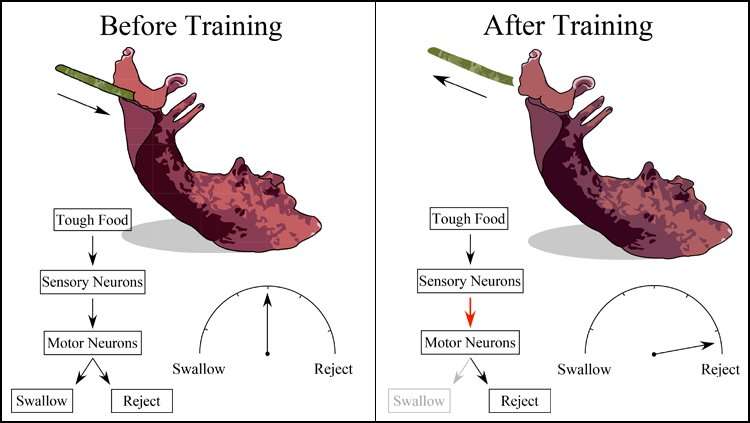Training Aplysia to reject swallowing objects changes the synapses between sensory and motor neurons. Credit: Tam et al., JNeurosci 2020
Learning changes behavior by altering many connections between brain cells in a variety of ways all at the same time, according to a study of sea slugs recently published in JNeurosci. The findings offer insight into how human learning can impact widespread brain areas.
Learning influences behavior by changing the synapses, the connections between neurons. Although simple, those changes prove considerable and occur in concert in new research by Tam et al.
The researchers explored how the synapses in the sea slug Aplysia change after the animals learn to reject swallowing inedible food. The result was a widespread change in the feeding system, as the animals now rejected non-food objects as well. In Aplysia, touch-sensing neurons form synapses with neurons that control groups of muscles responsible for feeding. After learning to reject food, synapses in this network of neurons underwent a variety of changes, both in number and amplitude. Some synapses strengthened, others weakened, and some switched between excitatory and inhibitory. All these changes combined to increase the likelihood that the feeding muscles would now reject an object that they might previously have tried to swallow.
More information: Multiple Local Synaptic Modifications at Specific Sensorimotor Connections After Learning Are Associated With Behavioral Adaptations That Are Components of a Global Response Change, JNeurosci (2020). DOI: 10.1523/JNEUROSCI.2647-19.2020
Journal information: Journal of Neuroscience
Provided by Society for Neuroscience
























